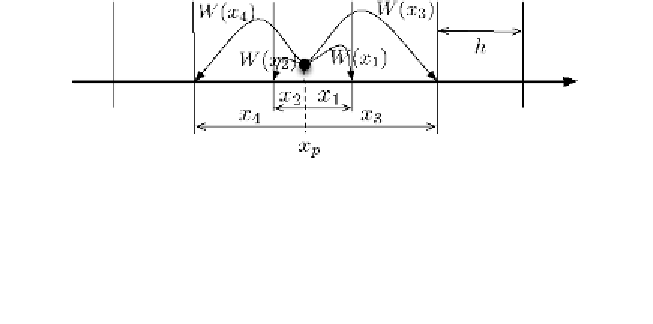Biology Reference
In-Depth Information
quantity up to a certain order can be constructed systematically.
109
Conservation of moments is an important property in the simulation of
biological systems, where the laws of physics require quantities such as
mass (zero-order moment), impulse (first-order moment), and angular
impulse (second-order moment) to be conserved. Building this conser-
vation right into the method constitutes an obvious advantage. One of
the most commonly used moment-conserving interpolation kernels (but
not the only one) is the
M
4
function,
109
given by
1
2
2
3
1
−
(
53
s
+
s
)
if 0
≤
s
<
1
1
2
2
Ms
′
()
=
(
2
−
s
) (
1
−
s
)
if 1
≤
s
≤
2
(12)
4
0
if
s
>
2
,
where
s
x
m
|/
h
. Hereby,
h
denotes the mesh spacing and
x
is the distance from the particle to the respective mesh node, as illus-
trated in Fig. 6. The
M
=
|
x
|/
h
=
|
x
p
−
4
kernel is third-order accurate, exactly con-
serving moments up to and including the second moment. For each
particle-node pair, we compute one weight 0
≤
W
pm
≤
1 and the por-
tion
ω
m
=
W
pm
ω
p
of the strength of particle
p
is attributed to mesh node
Fig. 6.
Particle-to-mesh interpolation in one dimension. The interpolation weight
is computed from the mesh spacing
h
and the distance
x
between the particle and
the mesh node. For each particle-node pair, a different weight is computed. The
particle strength is then multiplied by these weights and assigned to the mesh nodes.
Mesh-to-particle interpolation works analogously and uses the same interpolation
kernels.




